The film follows Dr. Grace Augustine (Sigourney Weaver) as she calls for her cigarette—inside an atmosphere-controlled base facility on a distant moon—and smokes it for five minutes of screen time through multiple camera set-ups, takes, cuts and changes of location. Weaver later said that she tried to persuade director/writer James Cameron to let her character use anything else besides a cigarette in the extended scene, such as an inhaler.
Screen captures
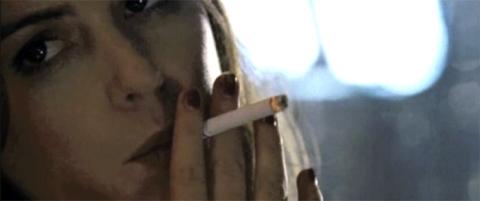
More screens from Definitely Maybe (2008)
Will (Ryan Reynolds) and April (Isla Fisher) bet whose cigarette brand smokes longer, kindling a movie-length, off-and-on romance. Each character smokes a detailed mock-up of an actual brand: Will smokes 'Marley' (Marlboro, an Altria brand) and April smokes 'American Eagle' (American Spirit, a Reynolds American brand). The shop where the smoke-off begins features several PepsiCo brands. The scene also features beer and credit card logos. New York State taxpayers subsidized the film.
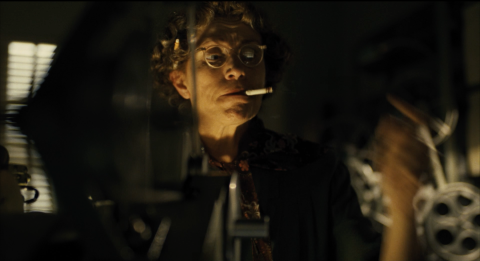
More screens from Hail Caesar! (2016)
Hail Caesar! (Universal, PG-13) is a Sturges-style send-up of Hollywood under the Studio System, when crass movie moguls ruled the lives of stars and screenwriters alike. Produced, written and directed by Ethan and Joel Coen, whose films often leave deep tobacco footprints, Hail Caesar features eleven smoking actors and more than 225 tobacco incidents. The film delivered 855 million tobacco impressions to domestic moviegoers of all ages. It displays the Viceroy brand (Altria: Philip Morris). Big Tobacco actively engaged in cross-promotion with major Hollywood studios in the 1930s, '40s and '50s. In Hail Caesar, we merely see the cultural confusion that decades of tobacco deals have left behind. (For more on Hollywood's promotional partnership with Big Tobacco, revealed in tobacco industry documents, view this graphic.)
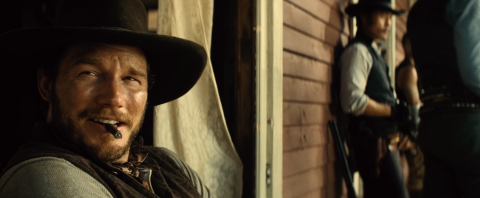
More screens from Magnificent Seven, The (2016)
The Magnificent Seven (Sony, PG-13) features eleven smoking characters and more than 125 tobacco incidents — twice as many as the 1960 version starring Yul Brynner and Steven McQueen. Good-guy smokers outnumber bad-guy smokers eight-to-three in the re-make. The 2016 film delivered 1.5 billion tobacco impressions to domestic movie audiences, three times as many as the 1960 version. Yul Brynner quit smoking after the US Surgeon General concluded, in 1964, that smoking causes lung cancer. Weeks before his own death from lung cancer in 1985, Brynner recorded a personal anti-tobacco message.
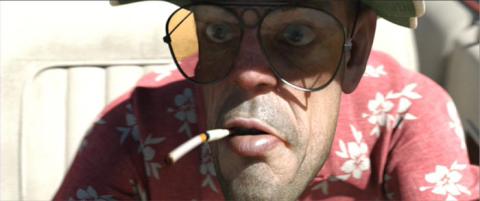
More screens from Rango (2011)
Rango, like many PG-rated animated films, aims to amuse young children and also their parents, who buy the tickets. This pastiche of movie Westerns references John Ford landscapes, High Noon showdowns, Fear and Loathing in Las Vegas (which also starred Johnny Depp) and Roman Polanski's Chinatown, with plenty of bone-bleached noir and video game action in between. One character transports her father's ashes—his tobacco ashes, she helpfully adds. Another character blows smoke in Rango's face. He swallows the cigar and scorches the bully. Other characters chew tobacco, while the Mayor's slinky secretary sports a glamorous cigarette holder. Tobacco companies embedded smoking in decades of films. Rango perpetuates it for a new generation.
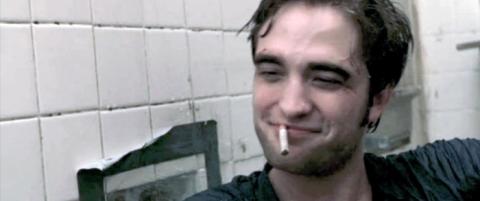
More screens from Remember Me (2010)
Robert Pattinson, fresh off the popular Twilight series, plays a young man whose many struggles include smoking. He smokes in a Central Park play area, he smokes in his father's World Trade Center office, and he smokes Camels in a bathtub. Transgressive but attractive, Pattinson's character embodies the "datable bad boy" type exploited in many movies—and multinational cigarette campaigns.
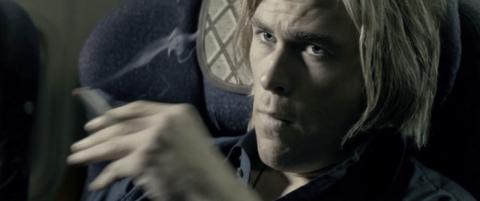
More screens from Rush (2013)
Rush recreated a 1970s Formula One racing rivalry. At the time of the film project's development, Rush was also the name of a Philip Morris Int'l promotion designed to remind fans in Eastern Europe and East Asia of Marlboro's long-time F1 sponsorship.
Both Philip Morris USA (Altria) and Philip Morris Int'l denied they engaged in product placement in this film. (Imperial Tobacco's John Players logo is also shown.) F1 driver James Hunt, a smoker in real life, died of a heart attack at age 45. Reportedly, he favored another brand over his sponsor's brand, Marlboro. Producers of the film Rush likely received public subsidies in both the UK and Germany.
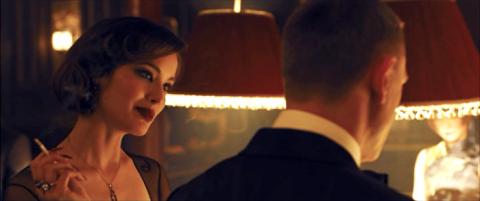
More screens from Skyfall (2012)
Set in a Chinese casino—but shot on an English soundstage—this crucial scene between the exotic Séverin and James Bond carefully keeps Séverin's cigarette in view and burning at the appropriate length. In all, Séverin's cigarette got two minutes of screen time, more than Heineken beer and a half dozen other brands that reportedly spent at least $49 million on cross-promotion and product placement in Skyfall. "I whore myself out a little bit for that and we get the movie made," Daniel Craig commented.

More screens from Vicky Cristina Barcelona (2008)
The Weinstein Company used a close-up of Penelope Cruz smoking a cigarette to publicize Woody Allen's film, Vicky Cristina Barcelona, in the United States. The shot itself never appeared in the film.